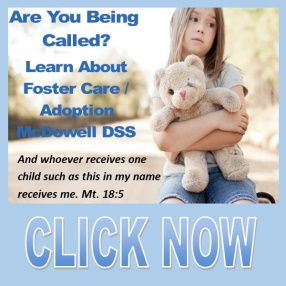SPIRIT OF LOVE
By Christy Lowman
Burke County
Did you know that there are animals that show love to one another and sometimes to other animals and humans? This month I thought we would talk about a predatory animal that shows love. It’s hard to think of a predator that eats other animals being capable of showing affection. Can you guess what this animal is?
A wolf. There were once 26 wolf species, 24 of which are now extinct, all that is left is the gray and red wolf. Wild red wolves can now only be found in North Carolina.
Gray wolves are not only gray but can be black, tan, and white.
Wolves are extremely social pack animals that mate for life. Their pack is a family, made up of parents and their offspring. Juveniles live with their parents sometimes until they are three years old, or when they are mature, sometimes they are younger. Juveniles will then leave that pack and start their own. A pack can have as many as thirty members but the usual number is between five and eight.
Wolves only mate once a year. Pups weigh one pound and are deaf and blind when they are born. They are very dependent on their mothers. Older pups often help raise and take care of the new pup liters. New liters usually consist of four to six pups. These pups grow quickly and are big enough to start exploring on their own at three weeks. By ten months old, they are as big as an adult wolf.
Adult wolves can reach as much as 6.5 feet in length, 32 inches tall, and weigh as much as 145 pounds (sometimes more). Their lifespan in the wild on average is 6-8 years but can be as much as 13.
A wolf’s footprint can span up to five inches long. They have four toes with claws that form an oval shape. Wolves can run up to 38mph in short lengths. They usually travel at a sprint of 5mph. Wolves run on their toes, not the pads of their feet.
Wolf packs travel up to thirty miles a day. Their territories can be as large as 1000 square miles.
Wolves have forty-two teeth with a jaw-crushing power of 1500 pounds per square inch! In comparison, a Rottweiler’s jaw-crushing power is 328 pounds per square inch. A single wolf can eat up to 20 pounds of meat a day. They mainly eat small critters but have been known to also eat ungulates (hooved mammals). Supposedly wolves don’t consider humans prey and won’t attack something that is not moving. However, I’m not willing to test out that theory!
A newborn’s eyes are bright blue (even though they are born blind) as they grow their eyes turn yellow. They then glow. They have a see-through covering, called tapetum lucidum, that causes them to glow. It also gives them the ability to see in the dark. Our eyesight is actually better than theirs when it comes to color and distance. Wolves’ eyes, however, are better than ours when tracking movement.
Wolves communicate in several ways. Silent body language is one they use while hunting. They may give a “gaze signal” during a group hunt to coordinate what to do without the prey hearing their presence. Other body language is eye contact, facial expressions, and posture.
Scent is another form of communication. Wolves have over 200 million scent cells. They communicate through urination markings, scratchings, etc.
Howling is another form of communication. Wolves can hear other wolves’ howls up to 10 miles away. Each wolf has its own unique howl. Howling is their way of sending messages to other pack members. It helps them assemble their pack, scare off non-pack members, locate lost pack members, and defend their territory from intruders.
Wolves howl out of love when a member of their pack is missing. They will howl more that night than other nights so the estranged member can find their way back home.
When a wolf howl is followed by a bark, this is an alarm to other members.
Sometimes wolves stand together, touching each other in a line, and howl together. Their tails are raised and quivering at the very tip.
Growling, barking, and whining are some other types of communication.
Wolves also show affection by rubbing noses when they see each other, and delivering “wet noses,” (licking faces) to another’s face. They also groom one another, nip, lick, and bite to show love. Snuggling and curling up together when they are asleep are other examples of affection.
A wolf’s saliva has healing properties and can heal wounds, fight bacteria growth, and encourage new tissue growth.
Showing affection and love to each pack member gives them a strong bond and keeps their pack strong instead of vulnerable.
Wolves take care of each other in their family, even when they are hurt or sick. They educate and raise their young. They also love to play with one another.
When wolves are raised by humans they show these same traits when showing love to their human pack members, but not every human is considered a pack member.
According to Oxford Dictionary, love is an intense feeling of deep affection.
Can you find all the ways in this article that describe how wolves show love and affection?
Can you think of ways that love was demonstrated in the Bible? I immediately think of God giving us His only Son that was sacrificed so we could be saved. I also think of Jesus washing the disciples’ feet out of love. Another example is when Jesus performed a miracle and feed the 5000 with 2 fish and 5 loaves of bread. Esther also demonstrated love when she put her life at risk to save her people. Moses’s mother showed love when she put him in the basket and sent him down the river to save his life. Pharaoh’s daughter showed compassion and love by saving Moses and raising him as her own. There are many examples of love in the Bible. Can you think of any others?
What are ways you can show love to others?
Dear Lord, I pray that You will help us react lovingly and show love to others so they may see You. I pray that we will remember all the examples of love in the Bible. I pray they will help us in our daily life. Thank you, dear Lord, for creating animals that also have qualities that show love. Thank you for the gifts of the fruits of the spirit. In Jesus’s name, I pray, Amen.
Let all that you do be done in love. 1 Corinthians 16:14
Bibliography
https://ncwf.org/wildlife/red-wolves/
https://wolf.org/wolf-info/wild-kids/fun-facts/
https://www.treehugger.com/wolf-facts-5120321
https://www.thedodo.com/dodowell/wolf-facts
https://www.visitbigsky.com/articles/post/interesting-facts-about-wolves/
https://misfitanimals.com/wolves/how-do-wolves-show-affection/
________________________________________
Christy Lowman is a Christian author and illustrator that lives in the foothills of the Blue Ridge Mountains with her husband and two children. She enjoys writing and illustrating books for all ages. Some of her short stories are published with Guideposts and HCI. Christy gives all the glory to God in everything she does. A portion of every book sold from the Small Bible Character Series will be donated to battle human trafficking. If you enjoy her books, “like’ her author page on Facebook and let her know! You can buy her books at //www.amazon.com/s?i=stripbooks&rh=p_27%3AChristy+Lowman&s=relevancerank&text=Christy+Lowman&ref=dp_byline_sr_book_1. You can reach her at //www.facebook.com/authorChristyLowman/
or christyssoaps@yahoo.com
You can read more Christian news from Christy here.
______________________________________







